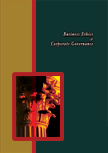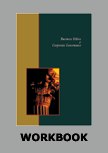Greenpeace:
Working for a "Green and Peaceful Future"
|
|
ICMR HOME | Case Studies Collection
Case Details:
Case Code : BECG041
Case Length : 16 Pages
Period : 1971-2004
Pub. Date : 2004
Teaching Note :Not Available
Organization : Greenpeace
Industry : Non Profit Organization, NGO
Countries : Global
To download Greenpeace:
Working for a "Green and Peaceful Future" case study (Case Code:
BECG041) click on the button below, and select the case from the list of available cases:

OR

Buy With PayPal
|
Price:
For delivery in electronic format: Rs. 500 ;
For delivery through Shipping & Handling Charges extra: Rs. 500 +Shipping & Handling Charges extra
»
Business Ethics Case Studies
» Case Studies Collection
» ICMR Home
» Short Case Studies
» View Detailed Pricing Info
» How To Order This Case
» Business Case Studies
» Case Studies by Area
» Case Studies by Industry
» Case Studies by Company
Please note:
This case study was compiled from published sources, and is intended to be used as a basis for class discussion. It is not intended to illustrate either effective or ineffective handling of a management situation. Nor is it a primary information source.
Chat with us

Please leave your feedback

|
|




<< Previous
Background Note
In 1969, a group of American activists left America to settle in Vancouver, Canada. Supported by money from anti-war Quaker societies,5 they formed a "Don't Make a Wave Committee" to create awareness on environment preservation, in the basement of a Unitarian Church in Vancouver.
|
In 1971, a small team of 12 activists of the committee, led by Jim Bohlen, Paul Cote, and Ben Metcalf, sailed in an old fishing boat called the Phyllis Cormack, to Amchitka, a tiny island off the West Coast of Alaska.
Amchitka was home to 3,000 wild species including endangered animals like sea otters, bald eagles and peregrine falcons.
Amchitka was also the site where the US was preparing to undertake underground nuclear tests the same year. Undoubtedly, any nuclear activity on that small island would be detrimental to the flora and fauna of the region.
|

|
The aim of these activists was simply to "bear witness" to the activities of the US forces and to draw the attention of the media and the world to the damage that such activity would cause in the area.
|
|
Although the boat, the Phyllis Cormack, was not allowed to reach the nuclear detonation site and the US still went ahead with its testing, the group did manage to draw world attention to the event. Eventually, nuclear testing on Amchitka was stopped from that year, and the island was later declared a bird sanctuary. The first success of the group strengthened their determination and resulted in the emergence of "Greenpeace" as a group of environment conscious activists. The name Greenpeace was suggested by Bill Darnell, an activist in the group. Greenpeace's
famous strategy "Media Mind Bomb"- reaching the public consciousness
through dramatic, camera-ready opposition to environmental crimes - was
initiated by Bob Hunter... |
Excerpts >>
|
|









